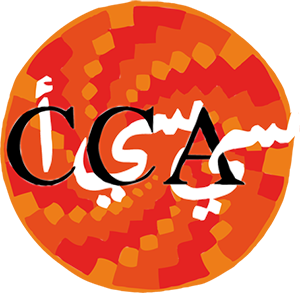Dr Komait Abdallah is a specialist in ancient Syrian mosaics, and Director of the scientific laboratories of the Directorate General of Antiquities and Museums (DGAM) in Damascus. In this interview he discusses current threats to the preservation of mosaic heritage in Syria.
Dr Abdallah, since the start of the armed conflict in Syria in 2011 we’ve been hearing increasingly worrying news about the state of archaeological sites in the country. What are the conditions of Syrian sites with mosaics at present?
It is very difficult to estimate the real situation of all mosaic sites in Syria. However, I can give you an idea of the condition of sites that are under government control. We know that these mosaics are in good condition and still conserved. We do not have much information about sites that are out of government control. We have some information from custodians and local citizens that there were clandestine excavations on these sites and many of the mosaics were pillaged. For example, in Apamea, there are a lot of clandestine excavations and we have no idea of what is going on there. Besides, we do not have a clue about the conditions of mosaics that are already there. We had received a great number of photos of mosaics looted from Syria, from the Interpol and sometimes from citizens in areas of conflict. I can say that the majority of these mosaics are not original. It is very probable that they are fakes made by the local atelier in the northwest of Syria, especially in the regions where we have already discovered mosaics. However, there are also many cases of real, Byzantine period mosaics. Judging from the style of the figures and the ornaments, I think the majority was discovered in the villages in northern Syria.
Is the situation any better in museums?
Yes, the situation of mosaics is better in museums. In the regions that are under government control, DGAM has taken the necessary measures to protect the museums, and the mosaics are in good conditions. However, in the regions that are controlled by rebels, museums are either protected by local citizens such as Marret Al Noman, or pillaged. The Al Raqqa museum, for example, was pillaged by ISIS rebels.
The New York Times reported that 86 looted mosaics were intercepted in Lebanon and returned to Syria this Spring. Has the DGAM taken many recovered looted mosaics into its care?
The number of looted mosaics that were returned to Syria from Lebanon is very exaggerated. Last summer my colleagues and I went to Lebanon and brought back a number of intercepted mosaics to the Damascus laboratory in order to examine them. Having studied the panels of these mosaics – not more than 20 in number – we think that most of them are probably false. The DGAM in Lebanon informs us that there are many other intercepted mosaics, and we have started to take measures in order to bring these artifacts back to Syria.
Intentional destruction of mosaics representing human figures has also been reported. Last January, an important 6th century Byzantine mosaic was blown up near Raqqa by ISIS militants. Have there been more cases recently?
First, as a specialist in the study of ancient mosaics in Syria I want to say that the mosaic destroyed in the Al Raqqa region was very interesting for mosaic history. I don’t know of other cases for the moment. It is very difficult to know whether something like this has happened or not in the regions controlled by extremists.
We’ve also heard a more positive story recently about a mosaic in Berhali, near Damascus, that was saved thanks to the dialogue between local residents, rebel militia and the DGAM. Can you tell us more about it?
Last year we successfully recovered a mosaic that was uncovered in Berhali, located 27 km west of Damascus. This village is controlled by rebel militia, and through negotiations between local citizens and rebels the DGAM was able to send a group of mosaic restorers on site. These were Mhamad Kaed, Borhan Zaraa, Maher Jbaee and Osaama Nofal. The Syrian army facilitated their arrival. They examined the mosaic, which dates back to the second half of the fourth century A.D., and brought it back to the laboratory. We have begun to restore it. However, the context of this mosaic is destroyed.
What are the priorities at the moment in safeguarding mosaics in Syria, and how can the international community contribute?
The main priority now is to stop mosaic trafficking, whether the mosaics are authentic or not. The international community should assist our neighboring countries in controlling the trafficking of Syrian antiquities. In this respect, I can mention the collaboration with the archeological authority in Lebanon that informed us about looted mosaics that we were able to bring back.
How do you see the collaboration between DGAM and MOSAIKON in the coming years? Do you have any recommendations to better design future initiatives in the framework of this program?
I think the collaboration between the DGAM and MOSAIKON in the coming years is very important. In my country we have a huge number of mosaics which date back to Roman and Byzantine periods. Some are exhibited in museums and a great number are still in storage. These mosaics should be restored because of the bad conditions of these stores. I think for the future the main priority is to establish a center for mosaic restoration and conservation in Damascus in collaboration with MOSAIKON. The great problem that we will face is the lack of mosaic laboratories and restorers in other Syrian provinces. This center will be the suitable place for training a new generation of restorers through the efforts of our experts and the scientific and technical assistance of MOSAIKON.
